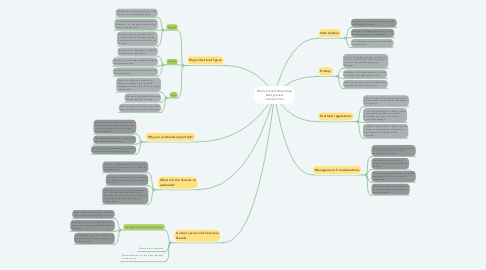
1. What are the threats to wetlands?
1.1. Creation, maintenance and transformation of wetland habitat was once controlled by natural process.
1.2. Floodplain swamps shrank or increased with normal changes in a rivers channel over time.
1.3. Last century has seen a greatly increased rate of wetland loss due to world war 2. The estimated 11 million acres of Michigan wetland has been reduced to only 3 millions acres.
2. Major Wetland Types
2.1. Marshes
2.1.1. Marshes have standing water from less than an inch to several feet deep.
2.1.2. Lily Pads and submerged plants such as elodea, mil foil and pond weed can be found in deeper water.
2.1.3. Many animals live in swamps live in marshes. Animals like birds, reptiles and mammals all share a home in the marshes.
2.2. Swamps
2.2.1. Swaps are best described as flooded woodlands or shrub lands.
2.2.2. The soil is usually waterlogged throughout the growing season.
2.2.3. Numerous wildflower species are found in swamp habitats.
2.3. Bogs
2.3.1. Bogs occur where accumulations of decaying vegetation form mats that eventually cover and then fill in old ponds or kettle lakes.
2.3.2. The type of bog people are most familiar with are acid bogs.
2.3.3. Vernal ponds are small bodies of water that form in the spring from melt water.
3. Why are wetlands important?
3.1. Because they occur where the dry land meets the water, wetlands play a critical role in the management of our water based resources.
3.2. They help pollutants from surface runoff from rain and melting snow.
3.3. Help recharge groundwater supplies when connected to underground aquafiers.
4. Annual cycles and Seasonal Needs
4.1. Life cycles of three common waterfowl
4.1.1. Wood ducks typically arrive in Michigan from southern areas typically in March.
4.1.2. Breeding pairs of blue winged teal prefer seasonally or temporary flooded, shallow wetlands.
4.1.3. The breeding range of mallards is the most extensive of any duck species in North America.

